#Southern Italian Thanksgiving Stuffing
Text
Stuffing and Dressing - Southern Italian Thanksgiving Stuffing Recipe

I have never tasted stuffing this good for Thanksgiving. All the great tastes are combined with a blend of southern cooking and Italian flavors. This recipe was given to me by my mother last year after it received rave reviews from everyone.
0 notes
Photo
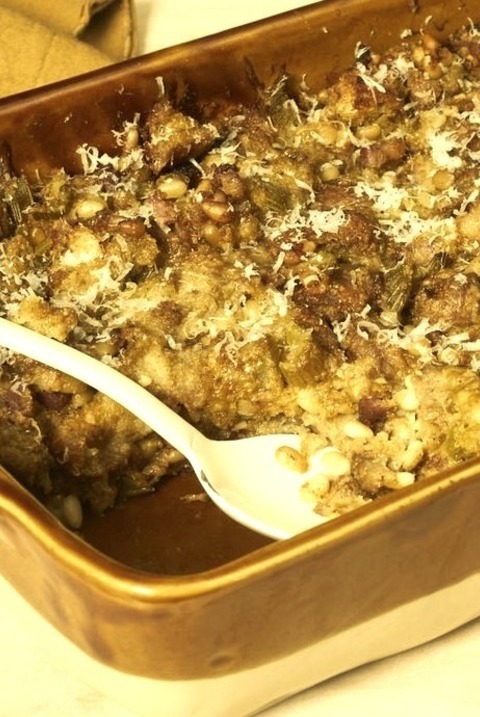
Southern Italian Thanksgiving Stuffing Recipe
This is the best Thanksgiving stuffing I have ever had. With a mix of Southern-style cooking and Italian flavors it brings all great tastes together. I got this recipe from my mom last year after everyone gave it amazing reviews! 2 onions chopped, 6 cups day-old French bread cut into 1/2 inch cubes, 3 cups crumbled cornbread, 7 large stalks celery chopped, 1 teaspoon salt, 2 tablespoons olive oil, 4 cups chicken broth, 1.5 pounds bulk Italian sausage, 1 cup toasted pine nuts, 4 cloves garlic minced, 1 ounce shaved Parmesan cheese, 2 tablespoons chopped fresh sage, 1/2 cup butter, 1.5 tablespoons rubbed dried sage, 2 cups shredded mozzarella cheese, 6 ounces pancetta bacon diced, 1.5 tablespoons poultry seasoning
0 notes
Text
Global Christmas Food Traditions | Brook Pub Christmas Food
The holiday season is the perfect time to embark on a global gastronomic adventure, and Brook Pub near Mill Road Cambridge is the perfect place to do just that. Let us help you celebrate the diversity of Global Christmas Food Traditions around the world. We've chosen the best meals from around the world, from the heady spices of India to the deep comfort of European classics, to give you a genuinely unique holiday experience. Also, let's get a handle on best Christmas dinner dishes and wines.

Every Bite Celebrates Diversity:
The holiday season is all about giving and receiving, and what better way to celebrate than with a feast that highlights the world's many cuisines? Here at Brook Pub Cambridge, cuisine has the power to unite people from all walks of life and all corners of the globe. This concept inspires Global Christmas Food Traditions, a multicultural celebration of food and customs.
Feast Unveiled: A Culinary Journey
Indian Favourites-
Biryani: The spices, tender meat, and symphony of flavours in biryani make it a feast to savour.
Butter Chicken: Tender chicken breasts simmered in a sauce made from a blend of tomato paste and butter.
Vegetable Korma: Seasonal veggies in a rich, fragrant coconut and cashew sauce make up Vegetable Korma.
An Italian Delight-
Classic Milanese risotto: A tribute to Italian sophistication, this risotto is creamy and flavoured with saffron.
"Osso Buco": Veal shanks braised in a rich broth and served with gremolata.
Mexican Fest-
Tamales: A traditional Mexican dish consisting of masa dough pouches stuffed with savoury meats or vegetables and steamed.
Poblano Mole: Tender chicken bathed in a rich, complex sauce of chiles, cocoa, and spices.
Elegance of Japan-
Assorted Sushi: A variety of nigiri and rolls highlight the skilled craftsmanship of sushi chefs.
Sukiyaki with beef: Beef slices are simmered in a savoury soy broth with other veggies and tofu.
French Comfort-
Coq au Vin: Classic French country-style braised chicken with mushrooms, onions, and bacon, flavoured with red wine.
Ratatouille: Southern French cuisine is honoured with this vibrant stew of Provencal veggies.
Moroccan Magic-
Tagine: Moroccan-style slow-cooked stew with tender meat or veggies and a variety of aromatic spices.
Royal Couscous: Couscous with a plethora of tasty toppings, including fresh produce, chickpeas, and savoury meats.
International Spirits and Wines That Pair Perfectly:
We have carefully selected wines and spirits from some of the world's finest wineries and distilleries to go with this international feast. Professional sommeliers are available to help you select drinks that will complement the flavours of your meal.
Food Pairing with Perfect Wines:
With Christmas quickly approaching, it's time to embark on a global culinary adventure. One of the most beautiful ways to celebrate the Christmas season is through the common language of food. In this article, we will delve into the art of pairing these delicious foods with the best wines for a really festive celebration, as well as examine some of the most renowned culinary traditions from around the world during the Christmas season.
America: Turkey with Cranberry Sauce
A roast turkey is often the main course of a classic American Christmas dinner. The bird is well seasoned, roasted to a beautiful brown, and accompanied by all the fixings. Cranberry sauce is a traditional side dish for Thanksgiving because its tart flavour pairs so well with the turkey's fatty meat.
Wine Pairing:
Roast turkey pairs wonderfully with a Pinot Noir or a juicy Zinfandel. The wine's medium body and refreshing acidity make for a more enjoyable meal.
Italy: Feast of the Seven Fishes
On Christmas Eve, Italians enjoy a seafood banquet known as the Feast of the Seven Fishes. There is a wide variety of fish, shellfish, and crustaceans, all of which can be served in numerous mouthwatering ways.
Wine Pairing:
To complement the variety of shellfish, choose a dry, mineral-driven Vermentino or a sparkling Prosecco. These wines' crisp acidity and lively carbonation do double duty by both cleansing the tongue and amplifying the seafood's inherent flavours.
Spain: Suckling Pig or Roast Lamb
Magnificent roasts, such as a suckling pig or a leg of delicious lamb, are commonplace on the Spanish Christmas table. The meat in these recipes is marinated in flavorful spices and then slow-roasted to perfection.
Wine Pairing:
Roasted meats benefit from being served with a full-bodied red wine like a Tempranillo from Rioja or a powerful Garnacha. The wine's strong tannins and blackberry aromas and flavours complement the meal perfectly.
France: Foie Gras and Bûche de Noël
French Christmas celebrations feature a variety of delectable dishes, including foie gras. This decadent treat is commonly served with Bûche de Nol, a festive Yule log-shaped dessert made of sponge cake and buttercream.
Wine Pairing:
The creamy, buttery flavours of foie gras pair wonderfully with a luscious Sauternes or a sweet late-harvest Gewürztraminer. These sweet wines are a great way to round out a meal and provide a touch of class.
Australia: Christmas BBQ
Due to the mild climate, Christmas celebrations in Australia tend to be less formal and more focused on outdoor activities, such as a seasonal BBQ. The main attractions include succulent pieces of meat, seafood, and a wide range of grilled veggies.
Wine Pairing:
The smokiness of the BBQ pairs well with the crisp, lemony flavours of a Chardonnay or Shiraz from a chilly climate. These wines are a nice change of pace and complement any outdoor meal.
Diversity in Flavours and Wines:
At Christmas, we should not only honour our customs but also welcome the diverse gastronomic traditions of the world. By delving into these many culinary customs and carefully pairing them with the most appropriate wines, we can throw a party that will be remembered for years to come. So cheers to the spirit of Christmas and the harmony of people everywhere by raising a glass and enjoying the flavours. Cheers!
Package Deals for Reserving a Christmas Party:
Cambridge's The Brook Pub caters to a wide variety of patrons since they understand that everyone has different preferences. Pick one of our meticulously prepared bundles if you want this Christmas to be unlike any other.
Package 1:
CHOOSE 6 - £18
This package is perfect for those who are seeking a delicious variety of canapés to satisfy their cravings. With six tasty options, your guests may sample a wide range of flavours.
Package 2:
CHOOSE 8 - £24
If you have trouble deciding between several tasty selections, the Select 8 package is for you. Your professional choice of eight canapés will create a flavorful symphony that your visitors won't soon forget.
Join Us in the Festivities:
We hope you'll join us for this extraordinary dining experience at Brook Pub Cambridge in Cambridge. We celebrate the rich tapestry of cultures and cuisines that make our planet so beautiful at our annual International Christmas Feast. Come with us on a culinary adventure that celebrates the power of coming together across differences.
Make your reservation now to join in on this once-in-a-lifetime Christmas celebration. Celebrate the wonder of the holiday season with us and our new Flavorful Canape Menu—we promise you won't go hungry or unmoved. Cheers to a plethora of tastes, and best wishes for the season!
#Global Christmas Food Traditions#brook pub cambridge#Canape Menu#delicious foods with the best wines#Brook Pub Cambridge#brook pub events#brook pub food
0 notes
Photo

Southern Italian Thanksgiving Stuffing
I have never tasted stuffing this good for Thanksgiving. All the great tastes are combined with a blend of southern cooking and Italian flavors. This recipe was given to me by my mother last year after it received rave reviews from everyone.
0 notes
Text
Southern Italian Thanksgiving Stuffing Recipe

This is the best Thanksgiving stuffing I have ever had. With a mix of Southern-style cooking and Italian flavors it brings all great tastes together. I got this recipe from my mom last year after everyone gave it amazing reviews!
0 notes
Link
0 notes
Photo

Southern Italian Thanksgiving Stuffing - Sausage Stuffing and Dressing
I have never tasted stuffing this good for Thanksgiving. All the great tastes are combined with a blend of southern cooking and Italian flavors. This recipe was given to me by my mother last year after it received rave reviews from everyone.
0 notes
Photo

This is the best Thanksgiving stuffing I have ever had. With a mix of Southern-style cooking and Italian flavors it brings all great tastes together. I got this recipe from my mom last year after everyone gave it amazing reviews!
1 note
·
View note
Photo

This is the best Thanksgiving stuffing I have ever had. With a mix of Southern-style cooking and Italian flavors it brings all great tastes together. I got this recipe from my mom last year after everyone gave it amazing reviews!
1 note
·
View note
Text
An Italian Christmas Meal
In Italy, Christmas “dinner” isn’t just dinner. On Christmas day, “Christmas Lunch” is the main meal and lasts for hours with multiple courses and dishes comparable to an American Thanksgiving day feast.
Being as extra as he always needs to be, he’s crammed as much of an Italian Christmas as he could into his section, selecting his personal favorites given all the different variations of meal traditions in each region.
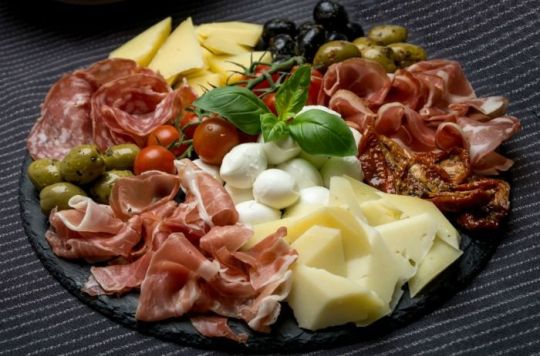
(Antipasto Platter)
Christmas Lunch begins with a classic antipasto spread featuring dry cured meats, salumi, fine Italian cheeses, briny olives, artichokes and more.
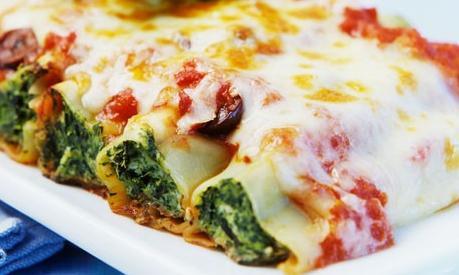
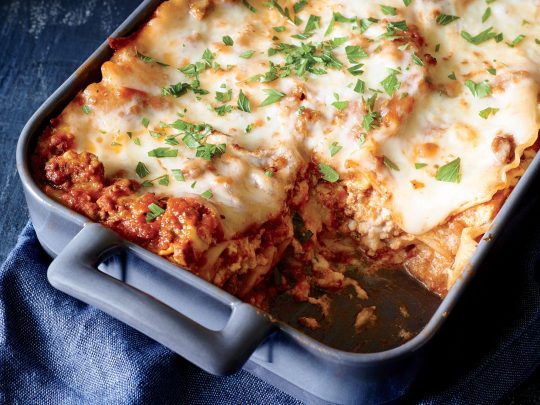
(Primo – Spinach & Ricotta Stuffed Cannelloni / Baked Lasagna)
The first course (primo) is pasta that varies by region. In Southern and Central Italy, baked pasta is a must. In Northern Italy, Lasagne Bolognese and filled pasta like manicotti (or cannelloni) and ravioli are traditional Christmas fare. Raph’s supplied some cannelloni and lasagna preferred in Rome for the castle.

(Il Secondo – Roast Lamb with Roasted Potatoes)
Following on is the second course (il second), which is usually the main meat dish and vegetables. The meat varies by region and family, however, roast lamb braised with garlic, rosemary, vinegar and anchovies is common in Rome, served with a healthy dose of roast potatoes.

(Dolce – Panettone / Pandoro)
And finally, dessert or sweets (dolce). In addition to a spread of cookies and other sweets, he’s requested two of the most popular types of sweet bread served on Christmas in his home country:
Panettone: Hailing from Milan, panettone is a sweet, dome-shaped bread loaf studded with raisins and candied citrus peels. Interestingly, the dough takes several days to make: Like sourdough, it has to be cured. Serve it up with either a hot beverage or a sweet wine like Moscato d’Asti.
Pandoro: This sweet Christmas bread from Verona is star-shaped and dusted with powdered sugar (some say to make it look like the nearby mountains). The name pan d’oro means “bread of gold,” and since white bread cost a lot in the Middle Ages and was consumed only by the wealthy, that’s exactly what this would have seemed like to the Veronese families who pinched pennies to enjoy this treat once a year! Today, you’ll sometimes see a hole cut in pandoro and filled with chantilly cream or gelato.
Buon appetito!
2 notes
·
View notes
Text
South Philly: A Love Story
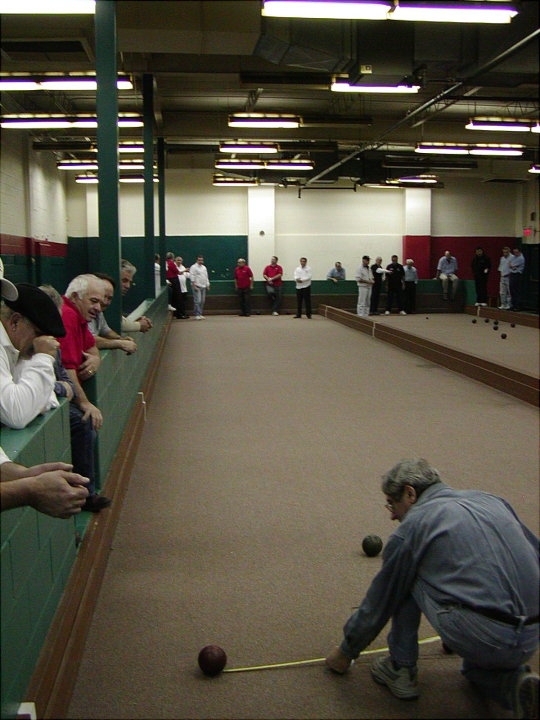
(Photos by Francis Cretarola)
The names of some (but not all) of the people in this otherwise truthful account have been changed to protect the guilty and the innocent, as well as my own ass.
As Cathy and I rounded the corner on Morris and turned onto our block of 13th (the “Miracle” stretch that, from the day after Thanksgiving through New Year’s, becomes a tourist destination that can be seen from space), I noticed the ambulance parked midway up the street. And my heart sank. They’d already loaded in whomever it was they came for, but I saw that it was stopped pretty much in front of Joey’s house. Joey is what I call an “original,” one of the people who were here when we first arrived more than twenty-three years ago, the mostly Italian-American neighbors who’d created this neighborhood and for generations defined it. Most of my block is still comprised of originals and their spawn, but it would be accurate to say that their impact on the character of the neighborhood is growing ever more muted.
I’d not seen Joey much recently. Just the odd sighting of him doing his constitutional walk around the block, moving a lot slower than he once did, and seeming a bit preoccupied. When we first arrived in the neighborhood Joey was already in his sixties, but a force of nature. Just over five feet tall, thin but solidly built, looking exactly like men of that age I’ve seen all over southern Italy, Joey’s physical stature belied the massive impact of his personality. He was generous, quick to offer a hand, free with his opinions. We never dove into politics, but we might not have been on the same page. At block parties he danced (to doo-wop, the “Grease” soundtrack, dance hits from the ‘70’s), in Cathy’s words, “as if no one was watching,” his arms punching the air in front of him, his legs pistons that fired in place. In these moments his face always revealed angelic contentment. Joey was a hell of a lot more comfortable in his own skin than I’ll ever be. His voice, again out of proportion to his diminutive size, boomed. From the inside of our house, I always knew when he was on the street.
His voice boomed in disconcerting ways when he harangued my brother and me for our ineptitude at bocce. Though completely inexperienced, we’d joined the street’s team playing in a league at the Guerin Rec Center (sponsored by a chiropractor, our team was called The Backbreakers). One of the teams we played was made up some of the guys from Danny and the Juniors. When they’d win, they’d sometimes break into a verse of “At the Hop.” It chapped our asses. It was meant to chap our asses. Breaking balls in South Philly is an honored and cherished tradition.
It was before one of these games that I learned something else about Joey. We were huddled outside, waiting for the doors to open and whining about the winter cold when he, out of nowhere and offhandedly, told us a story that stopped our bitching in its tracks:
“When I was in the army in Korea, it was so fucking cold our rifles froze. Couldn’t load ‘em. Couldn’t shoot ‘em. We had to piss on the works to get them working again.”
It shouldn’t have been a surprise that an old guy from South Philly had dealt with stuff that would’ve put me in a fetal position. These are tough people. And this was a good reminder.
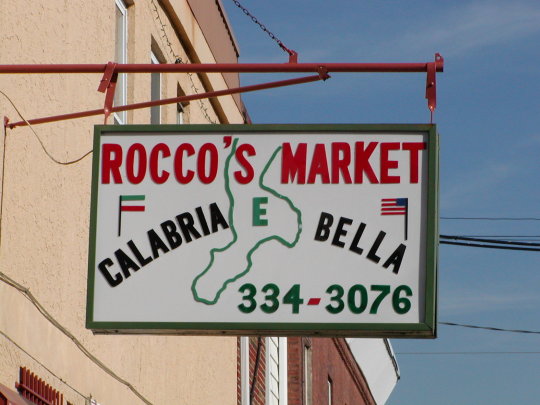
Cathy and I arrived in this neighborhood in 1996. Coming here changed everything for us. Without exaggeration, I can say that had we never settled here I’d never have become proficient in Italian, we’d never have lived in Abruzzo, and certainly never opened Le Virtú (our neighborhood trattoria dedicated to the cuisine of Abruzzo). We owe South Philly everything. And we’ve seen and been a major part of the changes to the neighborhood and East Passyunk Avenue, changes that have been breathlessly celebrated and discussed in local media. The demise of old South Philly has been frequently, enthusiastically, and prematurely reported in stories that have ranged from sensitive, thoughtful treatments to obnoxious, oblivious hit pieces. It’d be disingenuous for us to say we’re not happy about some of the changes. But it’s equally true that we miss a lot of what’s been lost, have mixed feelings about what’s filled the void (including our own roles in that), and would miss what’s left were it to vanish. When old South Philly goes, the country will have lost one its last original and truly great places. Were it to go during our lifetimes, we’d probably pull up stakes. There’d be no “here” here. We came to South Philly because of what it was, not what we thought it could become.
Rowhome life is familiar to me. I was born and raised up the Schuylkill in Reading, PA, in a blue-collar, predominantly Polish and Slavic neighborhood on the city’s southeast side. My mom’s parents, who also lived in our neighborhood, were “shitkickers” from rural North Carolina who’d moved to Reading for jobs in the textile mills. My dad was Italian-American. When I was a boy his father, from Abruzzo, lived in the house with us. Six of us - including my brother and one of my sisters - lived in a rowhome that would fit inside the one Cathy and I now occupy alone on 13th Street. Reading’s Italian section was gone by the time I was born, but my dad’s friends from that old neighborhood, a tightly knit group of half a dozen guys - partners since grade school in activities both benevolent and (mildly) nefarious - were more a part of our lives than blood relatives. We referred to them as “uncles.” From my grandfather, I got stories about the old country and about being an Italian immigrant when nobody here wanted Italians (he arrived in 1909, one of over 183,000 paesani to make the voyage that year). He explained why he changed his name (from Alfonso Cretarola to Francis Cratil) to avoid prejudice, warned about the KKK who hated Catholics and immigrants like him, spoke reverently of FDR, and taught me and my father before me to root for the underdog. From my dad’s friends I learned a lot, too: how to argue passionately without forgetting you loved the person you were arguing with; how to instantly forgive and when to hold a grudge; how to relentlessly and inventively break balls (the pedestrian insult can boomerang, resulting in a loss of status); numerous mannerisms and off-color Italian expressions and hand gestures; that morality ran deeper than legality; and - above all else - how to show up when a friend was in need.
They had a pinochle game that rotated from house to house. Games would often go on into the early morning. These were raucous, intensely competitive affairs, and master classes in Italian-American culture: music (Sinatra, Prima, and Martin); language (I heard “minchia” so often that I took to using it in conversations with school friends, not knowing it meant “cock,” often playing the role “fuck” does in English); casual volatility, sudden explosions of anger and joy; and food (platters of sausages, meatballs, provolone, capocollo, sopressata). Once, during a game at our house, the doorbell rang, and I went to answer. (I was in about 6th grade). I opened the door to a cop. He asked if the local district justice, one of my dad’s friends, was in the house. I led him to the game in the dining room. He approached the table, hand on his holster, and yelled that the game was busted. For a beat or two, the men at the table looked up at him in silence. Then the judge exploded with a “Vaffa…” and the room erupted in laughter. The cop sat down, had a bite to eat, and left after a few minutes. He’d just wanted to break balls.
So I felt prepared for South Philly. But it still surprised and (usually) delighted me.
We moved into our house in November of 1996. Coming from the paesano-deprived wastelands of Washington, DC, where we’d been living and working, the neighborhood was a paradise. Everywhere I turned were ingredients and foods that could then only be found in specialty stores in the District. There were six bread bakeries within a five-minute walk of my house - good bread, too - and three pasticcerias. There were three butchers inside that radius, including Sam Meloni’s a half a block away on Tasker. We had the Avenue Cheese Shop, Cellini’s, and Phil Mancuso’s as provisioners and, for rarer stuff, DiBruno’s and Claudio’s not too far away on 9th. The hoagie options were overwhelming. Fresh fish was a block away at Ippolito’s. And I’m just talking about the east side of Broad. Ritner Street west of Broad was, and remains, an oasis for anyone seeking Italian flavors. Dad’s Stuffings, Potito’s, and Cacia’s bakery (the tomato pie, but not just) are regional treasures. Cannuli’s Sausages is a full-service butcher shop, where they make a liver sausage taught to them years ago by women from Abruzzo. North of Ritner, on the 1500 block of South 15th, there’s Calabria Imports: sopressata sott’olio, provolone and pecorino cheeses, condiments from Calabria. I gained ten pounds the first few months in the house. And I didn’t care.
But South Philly’s more than a colorful, urban food court. There were/are rhythms, ways of being, and a specific sense of community. Oft-disparaged, stereotyped, and dismissed, the originals in the neighborhood made - and still make - it singular. They’ve provided some of my favorite memories.
My first night out drinking in the neighborhood, I went to La Caffe (now defunct, even the building’s gone) at 12th and Tasker. It was a typical, no-frills corner joint. There were three guys at the bar, all of whom gave me the side-eye as I bellied up. This was long before dedicated hipster ironists started mining the neighborhood for material. My hair was halfway to my ass then, and Italian American wouldn’t be the first, second, or third ethnicity you’d guess when taking in my mug. I wore a vintage Phillies jacket to at least establish some bona fides. I ordered a double Stoli. The guy closest to me gave in and asked what my story was, and a pleasant conversation ensued. We’d reached the point - which used to be a thing - of doing shots of anisette (a practice that, while amicable, often turned a pleasant night’s buzz into a pitiless banshee of a hangover), when the door opened, and a hulking guy, already in his cups, came in clutching a big paper bag under his arm like a football. He was warmly greeted, so, I construed, a regular. He set the grease-soaked bag on the bar, pulled it open and announced: “I got pork sandwiches for everybody!”.A round of roast pork with sharp provolone and broccoli rabe, Philly’s true classic sandwich (the cheesesteak is a pretender to the throne). Welcome to the neighborhood.
The days leading up to Thanksgiving, decorations start to go up: lights; inflatable Santas, snowmen, and Grinches; lights; wreaths; candy canes; nativities; Christmas balls; more lights; plastic holly; tinsel; real and fake evergreen trim; ribbon; additional lights; a giant Snoopy; some elves; and then, finally, the serious lights. This was all pretty much spontaneous, nothing like the organized/enforced effort that now creates the so-called “Miracle on 13th Street.” On Christmas Eve, we were more or less forced at the ends of loaded cannoli into the homes of neighbors to drink wine, anisette, sambuca, rum, and whiskey, and to make our own “plates” from vast spreads of Italian comfort foods. The warmth and good feeling were contagious. And the desire – a need, actually - to share, the humbling generosity, was something I’d only experience again when we began traveling in Abruzzo. My neighborhood in Reading had been close, but nothing like this. The New Year rang in with neighbors returning from dinners and parties in time to bang pots and pans in the middle of the block. The next day, houses up and down 13th and on the cross streets were open, offering neighbors and sometimes complete strangers hot drinks, food, and a bathroom as the Mummers strutted up Broad. It’s never been the same since they changed the parade route.
Our first spring in the house, I was in the kitchen making dinner - roast pork, spaghetti and meatballs - and looking longingly out the window. It was the first real beautiful day of the season. Clear blue skies, about 70 degrees, no humidity. I stepped out into our yard to soak it in. We’ve got the typical tiny South Philly concrete pad; nice for a garden if you’re game, maybe a fig tree (a few of our neighbors still have them). We’d yet to buy yard furniture, and I was regretting it. Cathy stepped out, and I mentioned that, but for the lack of a table and chairs, we could eat outside. “Next time,” she said, and we went back in. Minutes later we heard banging at the metal backyard gate. We opened it to find the old woman who lived in the house behind ours standing in the narrow alleyway. Born in the “Abruzzi” and always dressed in black, she stood less than five feet tall. In heavily accented English, she said “I give you table and two chairs.” She’d been pruning her rose bushes and heard us talking. She led Cathy through her yard and into her kitchen where she had a plain, white plastic table with matching chairs. We were speechless. “I no use anymore. Take,” she said.
The neighborhood landscape was a lot different then. Its mien, too. Before there was the East Passyunk “Singing Fountain” at the 11th Street triangle, the spot was occupied by an old gas station turned hoagie shop, Cipolloni’s Home Plate. Joe Cipolloni was a neighborhood kid who’d been a catcher in the Phillies’ farm system. We hit Joe’s for a medley of hoagies one of the first nights we crashed in the house. Franca Di Renzo’s venerable Tre Scalini was then across from the triangle on 11th. The Di Renzo family’s been serving food on the Avenue almost three decades now. Their departure (announced as I was writing this), is a dagger to the heart. Frankie’s Seafood Italiano (which memorably used the “Mambo Italiano” melody in its radio advertisements) was catty-corner from Franca on Tasker. On East Passyunk there was also Ozzie’s Trattoria and Rosalena’s; Mr. Martino’s Trattoria, Mamma Maria’s, and Marra’s were where they still are today. Walking into a joint meant being warmly greeted with a “Hon,” “Cuz,” or some other friendly moniker. Service was always personable, attentive, and familiar, like you were an old friend. For the life of me, I don’t know what the objection - frequently voiced in amateur and professional reviews - is to this style. Why come to one of the country’s most unique places and ask them to conform to your expectations, change character? Or mock them for who they are? You’re a guest in their neighborhood. Let them be who they are. Roll with it. How self-important, fragile, or far up your own lower digestive tract must you be to be traumatized or offended by “Hon” or the like? What kind of bloodless, sterile, frigid, suppressed, affection-deprived “family” environments produce such specimens? ‘Merigan!
Transactions at restaurants and stores in South Philly weren’t solely financial in nature. They involved human exchanges, real conversation beyond any purchase, interactions that formed some of the neighborhood’s connective tissue. I know that some of the new arrivals in the neighborhood regarded this as a time suck: “Why am I waiting behind this ambulatory fossil while she recounts, for the fifth time, her late husband’s illness, her son’s family’s impending and unapproved move to Jersey, and her plans for the Padre Pio festival? I just want to buy my damned provolone and go!” While an understandable complaint, it was also oblivious. These conversations created and maintained community. Walking into Sam Meloni’s butcher shop was, for me, as much for social reasons as it was to buy meat. The family shop had been at the corner of Iseminger and Tasker since 1938. Sam - in his late sixties and more alive than I’d ever been in my twenties - held court behind the counter, Jeff cap rakishly turned backwards, his expressive faccia usually wearing a wry smile. Entering the store meant immersion in the perpetual, playful, multi-subject argument between Sam and his nephew Bobby - a big, imposing, but sweet dude - and their straight-man assistant, both damn good butchers themselves. You were brought into the fray, asked to weigh in and choose sides, and then identified as an ally or unreasonable bastard. I would go in for some chicken cutlets and walk out nearly an hour later with the chicken, veal scallopini, chicken meatballs, and, most importantly, renewed faith in humanity. Sam’s family was from the town of Campli in Abruzzo’s Teramo province. My family’s also from Teramo. So, we talked a lot about the old country. Once, during my first bought with Hodgkin’s lymphoma, I walked over to Sam’s for some cutlets and Italian water, the Lurisia stuff Cathy loved. He was alone in the shop that day. He knew what was going on – I’d had my involuntary “chemo haircut” (much of it had fallen out) and my skin had turned an alluring shade of gray. He rang me up then asked how I was getting home. I lived less than a block away.
“I’m walking, Sam.”
“No. No you ain’t,” he snapped.
He washed his hands, brushed himself off, grabbed my stuff, and locked up the shop. And he drove me home.
We were in Italy when Sam passed. It was an aggressive cancer. Friends of ours, who’d recently moved to the ‘hood and fallen in love with him and his place, went to the memorial. They said that there were photos of Sam from all through his life. A lot of shots from parties. One taken “down the shore” showed him carousing with his friends on the beach, their towels surrounded by “dead soldiers,” empty bottles of booze. Sam had fun. Our friends also mentioned the score of unescorted older women at the memorial. Sam had been a committed bachelor until the end. His nephew Bobby died, also of cancer, only a few months later. The shop closed.
Immersed in this Italian-American bubble, I felt waves of nostalgia, yearnings for the sense of belonging my dad and his friends clearly had in their boyhood enclave (as much as I loved it, I would never be from South Philly, and we’d been transplants to the Polish/Slavic quarter in Reading), and a desire to connect with my roots. Everywhere around me I’d see older, Italian-born guys – hair (or what was left of it) closely cropped; face shaved but casting a shadow by mid-afternoon; height a little over five feet; build thin to stocky, but solid; pants belted and hiked to the midsection; shirt tucked and buttoned to the neck; handkerchief in the back pocket; shoes plain, of leather; sartorial mien somber – who reminded me of my grandfather. These guys and their wives are usually quiet, reserved. They keep to themselves, cook and eat at home. Which is maybe why the newcomers moving in and journalists perfunctorily writing about South Philly often don’t seem to notice them. A lot of them used to congregate at the now-defunct Caffe Italia west of Broad on Snyder. But they’re still around, hiding in plain sight. Many of them, I’d discover, were from villages near where Alfonso had been born. Listening to them speak a language familiar but, really, impenetrable to me became intolerable. I wanted to understand where all this stuff around me had come from, the place that’d shaped Alfonso and, to a lesser extent, my father and myself. So, with Cathy’s permission (she’s a mensch), I quit my job writing and copyediting for a publisher out of Maryland and made the first of my extended trips to Italy to study the language, first in Florence, but later and more intensely in Rome. My studies provided me the key to exploring and understanding Abruzzo - a wild, beautiful, mostly untraveled region, and the point of origin for many of South Philly’s denizens - and penetrating, just a little (the community can be justifiably suspicious and guarded), the native Italian component of my adopted neighborhood.
It wasn’t too long after our return from an extended stay, with our two Jack Russells, in Abruzzo that we met, befriended, and – in a move that determined our future road and made Le Virtú possible but which for a short while caused us crippling anxiety and provided a window to hell – started working with a chef from Napoli operating on the west side of Broad. This guy – let’s call him Gennaro – prepared the real-deal cucina napolitana. No compromises, nothing elaborate, just the genuine article. Working with him was our intro to the biz. Luciana, our opening chef at Le Virtú, was a frequent dining guest and then, after Gennaro ominously disappeared one weekend, his sometime substitute in the kitchen. Gennaro, who we discovered too late had a history with illicit substances and a taste for expensive wine that someone else had paid for (chefs, the little dears! It’s always the Aglianico, Amarone or Barolo, and never the Nero di Troia), gradually went off the rails, slipping into legitimate mental illness. When out of paranoia he asked a busboy to frisk a customer because the guy was speaking in Neapolitan dialect (your guess is as good as ours), we cut bait. My last sight of Gennaro was on my stoop around midnight, asking for the phone number of a former server, a young girl he’d become convinced was the Madonna (not the singer, but Christ’s mom, of immaculate conception fame). When I denied his request, he produced a knife, and I a baseball bat (what else is a vestibule for?). I was chasing him up the street, bat in hand, when I locked eyes with an incredulous cop in his cruiser (not the first time this had happened, by the way). I flagged down the cop and he took Gennaro away. The whole thing was our first restaurant “cash-ectomy,” but my brother and Cathy had developed a taste for the biz. So, we were in, just not with Gennaro.
But before it all turned to merda, Gennaro provided – and subsequently burned – bridges into South Philly’s discrete, native-born community. We frequented expatriate clubs, visited in homes, met, dined with, and came to know many of our Italian neighbors. Language was crucial to that. And it proved crucial to repairing the damage Gennaro’s erratic behavior was continuing to cause in the neighborhood after our breakup. As part of the reconciliation with the neighbors, we were invited for dinner at the home of a family from Basilicata, the soulful, beautiful, but economically and historically screwed region at the instep of The Boot (between Puglia to the east and Calabria and Campania to the west). The head of the household – let’s call him Domenico - had been a semi-regular at Gennaro’s place and had watched his gradual decline. It was Domenico who’d come to us with stories of Gennaro’s increasing madness and how it impacted the street as, in our absence, it all went off the rails. We did all we could to clean up the messes, settling Gennaro’s accounts with purveyors, apologizing to neighbors. In the meanwhile, Gennaro escaped, first to Jersey and the employ of a well-known, native-born restaurateur, and then permanently back to Napoli. Once returned home, his old habits and illnesses caught up with him. He didn’t make it. Domenico’s mother - short, whippet-thin, in her seventies, and a non-English speaker – cooked for us and his family. It ranks among the best and most authentic Italian dining experiences I’ve ever had in the US. The décor of the rowhome was completely old-world, the lighting soft, the house immaculate in the way only immigrant homes are, a purposeful demonstration of work ethic and pride. Nothing she made was remotely elaborate, just all beautifully done. Beyond the perfection of the homemade pasta, the simplicity and delicacy of the grilled and fried antipasti, the generous portions of wine and digestivi, I most remember the image of this woman, visible from our table, relentlessly at work for hours at the kitchen stove, a culinary machine. She produced course after course, never sat down with us, never stopped moving. It had to be nearly midnight when she reluctantly emerged from the kitchen to accept our thanks and unconditional surrender.
By the time we opened Le Virtú in October of 2007, the demographic changes already at work when we arrived had greatly accelerated. Fresh diasporas from Mexico, Vietnam, Cambodia, and elsewhere filled the gaps (and storefronts) left by Italian Americans. The sons and grandchildren of Italian immigrants often didn’t want to carry on family businesses or wanted to pursue a suburban style of life (that I’ll never understand, and the idea of which gives me the fantods). These new arrivals brought with them the energy and entrepreneurial impulse that generally attends immigrant waves. Family-oriented, hardworking, and driven to succeed, they’ve greatly benefited the neighborhood. From my vantage, they remind me of my grandfather and his peers. Others arriving were generally more affluent, white, and college educated. It was in the late 90’s that we began to see folks, obviously from outside the neighborhood, walking around and looking at houses. Browsers. Handwritten notes asking if we’d consider selling our home were shoved through our mail slot. It was hard to know how to feel about it. Priced out of more expensive areas or newly arrived in the city, these folks were attracted by the neighborhood’s amenities, housing stock, proximity to the subway, and convenience to Center City. Prices on our own block increased eight- to tenfold between 1996 and today, providing a windfall for some neighbors with an itch to leave but also pretty much making it certain that their children couldn’t buy in the vicinity if they wanted to stay.
By the mid- to late-aughts, swarms of hipsters, ironic deep divers, beer geeks, gourmands, and self-appointed food critics were descending on the neighborhood as the infrastructure to satisfy them all had developed. Bars began offering vast selections of national and local craft and Belgian beers. Even corner bars started carrying a few crafts and a couple of Chimays. The harbinger for all of this, however, was Ristorante Paradiso, the dream of Lynn Rinaldi, a proud product of the neighborhood. Paradiso departed from the familiar Italian-American narrative and bravely introduced Italian regional themes to East Passyunk. Heartened by Lynn’s success, we opened Le Virtú, digging deep into la cucina Abruzzese and proffering dishes that would have been familiar to the grandparents and great grandparents of our neighbors. And, of course, a diverse host of restaurants and other eateries – most of them astonishingly good – followed. It’s now possible to figuratively eat your way across much of the globe and never leave East Passyunk.
We’d imagined Le Virtú as a love letter to Abruzzo, where we’d lived after my first occurrence of Hodgkin’s and where we returned to annually and, perhaps naively, a gift of gratitude to the neighborhood. Our first menus, created by Luciana from Abruzzo, were straight out of tradition, without any “cheffy” interpretation. And still we’d have guests, some of them locals and neighbors, who were baffled by our fare. One guy, seated at the bar and looking over our offerings, his face a map of confusion, remarked: “Not for nothing, but is there anything Italian on this menu?” So, a little (hopefully unpedantic) explanation often proved necessary. Using ingredients from specific local farms, importing rare ingredients from Abruzzo (buying our saffron involved going to the village of Civitaretenga in Abruzzo and knocking on a farmer’s door; we filled suitcases with rare cheeses from organic farms in the region), and trying to proffer quality wines and digestives made our prices above what had been the neighborhood norm. Without doubt, we alienated some locals. And the people most familiar with our dishes, the native-born Italians living in the neighborhood, never went out to eat Italian. The idea of going out and paying for what you could make at home was, to them, obscene. Only ‘merigan did that. But we gradually found our clientele, or they found us. And watching, as has happened many times. family shedding nostalgic tears over a simple bowl of scrippelle ‘mbusse - pecorino-filled crepes in chicken broth – and remembering the grandmothers from Abruzzo, now most likely departed, who used to make it for special occasions…you can’t put a price on that.
The Italian South Philly that persists is deceptively large, especially if you’re just judging by a count of storefronts and businesses. Philly’s population of Italian Americans is still the second largest in the US, after New York’s, and a lot of that’s attributable to South Philly. Most blocks in the old enclave are still partly or majority Italian-American, even if some - not most, but a sizable number - of the newcomers tend to pretend the originals don’t exist. Or maybe just wish that they didn’t. This disrespect is often palpable and felt among the long-time residents. They talk about it. Early on during East Passyunk’s so-called “renaissance,” a new store owner catering to more recent neighborhood arrivals and visitors to the Avenue remarked to a journalist that his block had three Italian eateries but that there was no way that could last. He sounded hopeful. I can’t count the episodes in which, drinking or dining at a local joint or just walking along the street, I’ve heard visitors or newcomers condescendingly discussing the long-time residents, the Italian Americans, like Margaret Mead describing the subjects of some anthropological expedition. They say these things blithely, indifferent to or unaware of the fact that the locals hear them. A professor at a city university once asked me where I lived. When I responded, she grimaced then asked: “How do you like living down there with them?” Again, I don’t look Italian American. I informed her of my background and ended the conversation.
I won’t whitewash any of my neighborhood’s shortcomings. Except maybe to say that they seem to be painfully evident everywhere in America. We’ve drawn the ire of some of South Philly’s less-accepting citizens for the causes we’ve supported at Le Virtú, the fundraisers for immigrants, refugees, and asylum seekers. But many, maybe even most of our strongest supporters have also been Italian American and folks from the neighborhood. They’ve shown up when we’ve asked for help. We’re indebted to them. But the easy stereotypes often used to describe Italian South Philly and Italian Americans in general are tired, lazy, and profoundly ironic. They also have a long history. Most Italian Americans can trace their provenance to somewhere in the former Kingdom of the Two Sicilies, the southern realm that lasted until most of the peninsula was unified at bayonet point in 1861. In Italy, southerners were often disparaged, labeled terroni for their connection to the earth and the dark color of their skin. Into the 1970’s, some landlords in northern cities openly refused to rent to southerners. Crackpot theories about their inferiority and tendency toward criminality began in northern Italy in the 19th century and followed them to the U.S. Nativist propaganda and even the editorial sections of papers as reputable as The New York Times attacked their character and lamented their arrival in America. During an earlier, xenophobic freakout in the 1920’s, we changed our immigration laws, in part, to stop the waves from southern Italy breaking on our shores. It’s painful to see how durable and apparently socially acceptable these stereotypes are. Just as it’s painful and shameful when some Italian Americans forget this story and mimic their ancestors’ tormentors.
What the future is for the Italian enclave in South Philly, I can’t say. I’m trying to enjoy as much of it that remains as I can, to savor it. The new immigrant communities, vibrant and essential to the neighborhood’s future as they may be, are understandably insular. And it’s unclear how committed the other newcomers are to the neighborhood, the young families, couples, and affluent professionals making their homes here. Will they stay or, as many do, move on when their kids reach school age? Some have had a real positive impact. Participation in school and neighborhood associations is important and has for sure contributed to the area’s betterment. But those types of organizations aren’t deeply organic. They can and do strengthen a community, but I don’t think that they often create the profound sense of belonging that palpably existed here when we arrived, and that persists among long-time residents. Many of the newcomers turn their eyes from and backs to the street. Their lives occur inside their homes, and they don’t actively participate in their block’s daily social exchanges and rhythms. Is this a suburban mode of being? I wouldn’t know. Since we opened our restaurant, we are also guilty of often hiding behind our door, preoccupied and occasionally overwhelmed as we are (we’ve nobody but ourselves to blame for this; no one held a gun to our heads and forced us to open a restaurant). It seems clear to me and to Cathy that the originals provide much of the social glue that makes our part of South Philly an actual neighborhood. Their emotional attachment to the place, their pride, their events still inform the place’s identity. Without them, this is just an amorphous cluster of streets and homes, meaningless real estate designations. They provide much of the framework that whatever’s to come will be built on.
And, again, the community is stronger than some reports might indicate. If you’re ever lucky enough to happen upon a serenade, you’ll see and feel how strong. Before a wedding, the bride’s street is blocked off, and her and the groom’s families, as well as neighbors, gather in front of the rowhome. The groom “serenades” her from the street. There’s music, wine, food, laughter, an epic party. It’s something brought here from the old country. My brother Fred got to participate in one in Abruzzo, in the mountain village of Pacentro. He held the groom’s ladder as he climbed to knock on his bride’s window. Once arrived at the window, the groom, a musician of note but, by his own admission, not much of a singer, had to belt out an appropriate tune while all his friends and half the town looked on. His musician friends then joined in. They’re more to the letter of the law in Abruzzo. In South Philly there’s often a DJ instead. The couple in Pacentro, dear friends of ours who’ve hosted us in their own homes, reluctantly left Abruzzo after their marriage to realize their dreams. They now live happily in our South Philly neighborhood.
Oh, and by the way, Joey made it. He’s okay.
#southphilly italianamerican philly abruzzo abruzzese southernitalian levirtu#nopassportrequired eastpassyunk
1 note
·
View note
Text
Trying to track the Winter Soldier through both canon and history....god help me....
As a follow up to the First Avenger timeline, insomnia brought us here.

February 1945 - Bucky falls from a goddamn train in the Alps. We've gone over this.
Okay, we know Bucky was in Russian/Hydra hands by early '45. The first thing to look into is Operation Paperclip. You may recognize this from TWS, but it was not made up by the MCU, it was a real thing. In May of 1945, a U.S. Army Major Robert B. Staver sent a telegram to the Pentagon, pushing the idea of capturing and using German scientists toward the war effort in the Pacific. They proceeded to do just that, housing captured scientists in southern Bavaria. So smart, keeping the Nazis in Germany and stuff. By November, the project had been renamed Operation Paperclip. For secrecy?
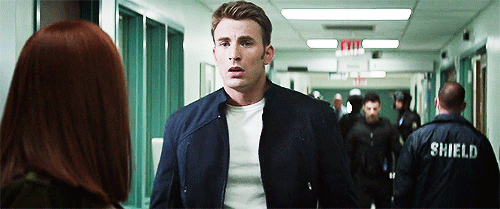
Most of the early objectives of this operation were to keep the German scientists from emigrating to non-’murica friendly countries and continuing their work. Eventually, the US realized it was just fine for them to continue their work, as long as it was for them. By the end of the war, Germans with 'marketable' knowledge were being 'recruited' through ‘orders’ for their families and such to report to Allied bases; the important ones were then moved to ‘secret’ locations (one was code-named DUSTBIN and it was proooobably in the desert near Los Alamos idk) and ‘questioned’; detained for months at a time.

Some of these scientists were later removed and charged for their war-time actions. Since we know Zola was still part of SHIELD when he built the nightmare computer in the 70's, he obviously wasn't one of those charged with the atrocities he committed. None of the scientists were free to roam until at least '47. That leads us to believe that Zola couldn't have gotten his hands back on Bucky for at least 2 years, likely more. It's possible Zola never got his hands on Bucky again, if you take Bucky's memories as more like amalgams and assume he just uses Zola as the face for any and all faceless scientists he encountered. It's not out of the question.

Moving on. Bucky is found by Russians, and since we've been over that too, needless to say it's highly unlikely that many Russians were deserting the Red Army to go be buddies with a mostly Nazi-associated Hydra operation at the end of WW2. The Russians and the Nazis were not friends, mmkay, Russia lost nearly 40 million people during WW2, and only 9 million of those were in combat. But, by the time the first traces of the Cold War come around, Russians in Hydra would definitely be a thing, just like Americans in Hydra would be a thing. Again, the date 1947 comes into play, as that's a pretty accepted start date of the Cold War tensions. But.
But.
Bucky was found by some very lost Russians and brought in, where they took him fuck knows where to pimp his ride. There's not much we can take from the MCU with the meager flashbacks, but there is a very clear timeline from Captain America: Winter Soldier Vol. 2. I'll fill in what I can from the MCU, since that's what this is focusing on, and rely on the comics for what I can’t.

March 23, 1945 - Bucky's KGB file is created by the KGB branch in Dnepropetrovsk Region, USSR, which in 2016 became known as Dnipro Raion, Ukraine. (**Thanks to Morrighan on AO3 for this translation!) Of note is the giant Dnipropetrovsk Automobile Factory, built by German POWs starting in December of 1945, which was planned by the Russians as a secret military machining plant. It wasn't under way at this particular date, but the supplies for such large industry were, and it stands to reason the future Fist of Hydra would have been brought to a place that was intended to become the center of the Soviet secret weapons think tank.
May 7, 1945 - Bucky dies. Like, literally. The comics are clear on this, that when the Russians found him he was frozen solid, and dead. One of them had been on a mission with the Commandos, though, and after seeing Bucky in action, suspected he had the serum just like Steve (he didn't, he was just a badass), so they thaw him like a Thanksgiving turkey to try to get tissue and fluid samples. When he's thawed, he's dead as a doornail. They revive him, though, and even the scientists are kind of shocked it worked, since he did not, in fact, have the serum. What he did have was the memory of how to kick ass, which they learn the hard way haha, so they sedate his ass until they can get all their samples from him. Having said that, MCU canon directly controverts this. MCU Bucky DOES have the serum, that's been made very clear from several of his feats of strength that did not include the metal arm, and he was obviously not flash frozen in the Alps because he remembers shit. So. Do with that dichotomy what you will, just thought I'd share.
May 21, 1945 - After determining that they can't recreate the serum from him, and that he's gonna kick their asses if they let him stay conscious, Bucky is put into cryo-freeze. Even the scientist making the notes is all IDFK about the order when it's given by Karpov, he's like birch is crazy.
In the flashback scene from TWS where Bucky's metal arm is being attached, the doctor uses a handheld electric bone saw.

The patent for the first hand held reciprocating saw was filed on June 27, 1952. Trust me. You do not want to try Googling that, okay, let me take the hit on those visuals. I spontaneously became a vegetarian. Anyway, it's safe to assume the flashback scene of Bucky getting what remained of his arm cut off was at the least 7 years of captivity later. Since Bucky hasn't aged any more than the Capsicle did, it's safe to assume, and mentioned in those pieces of comics canon, that the Russians essentially said *shrug* and stuffed the half-dead American soldier they found in the fridge for a decade like my grandmother used to do to the stuff she canned every summer.
Since the cryo containment they stuff him back into after he has the metal arm was actually in the operating theater, hence already tested and in use (and mobile, apparently? what did they do push him around on a handcart?? that would be the worst job) it's a pretty safe assumption to make that even MCU Bucky was almost immediately put on ice after being captured because he kept trying to kill folks, and kept that way until at least mid to late 1952, if not later.
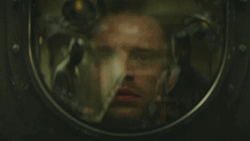
Personal tangent? If the Russians/Hydra already had a Cryo tank to conveniently throw Bucky into, one can assume they had a use for it, right? My personal theory is that it was for Super Soldiers, meaning someone had at least theorized that a Super Soldier could be frozen. How many fucking Cold War resources do you think were put toward hunting for that fucking Valkyrie in the Arctic?

June 1954 - The date comes from Captain America: Winter Soldier Vol. 2 again, and it gels with the info above about the arm-attachment so I'm going with it. Bucky becomes the 'Fist of Hydra' and is then put back on ice because the Fist of Hydra tries to strangle his doctor. It would be super easy to split his time and say he was with the Russians until the dissolution of the Soviet Union, then was transferred to Hydra's control, but this Fist of Hydra line makes that impossible. So even though the Russians in the form of the KGB had him, they were obviously still working under or with the Hydrapus. Bucky worked for Department X in the Comics, but that's not an MCU thing, so. That's where the MCU and the comics diverge wildly, and make this a migraine-inducing task. Right after they let him out of Cryo, Bucky escapes, but since he's in the middle of the goddamn Soviet wilderness, he doesn't get far.

1959 - The first page of the file Steve receives from Natasha about the Winter Soldier is probably dated 1959, from the KGB branch in Lvovsky Region, USSR, which is the Lviv Region in Ukraine. The area is super varied in landscape and population, which could have served as a proving ground of sorts for a weapon like the Winter Soldier. This can probably be taken as a pretty clear date for when the Winter Soldier officially became 'active' under the direction of the KGB. That's five years from the metal arm being attached to becoming the Asset, during which you can only assume they were working on the base programming for what would later become the wipes.
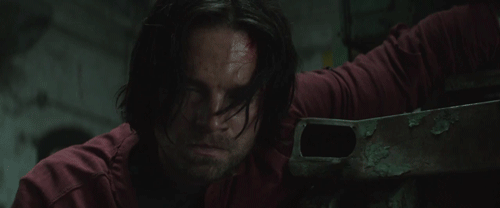
1964 - This is technically when the Winter Soldier's kills start being counted, if you take Natasha's 'the last 50 years' literally. So I'm going to ignore pre-64 history, pretty much, and assume that the 5-10 years after June 1954 were spent turning Bucky into The Winter Soldier with mindfucking, training, languages, ect. It's important to note that in the comics, Bucky was never tortured, per se. Not physically, I guess, though the defining line of ‘torture’ here is thin. He was already an amnesiac, so they used a combination of sensory deprivation and 'Mental Implantation' experiments to make him loyal to them. You don't make someone loyal by beating the shit out of them, you know? There's also evidence in the movies in the way Bucky reacts to people; he is clearly in charge of the STRIKE team, not taking their orders; he doesn't flinch when Steve touches him, nor does he mind one bit the Wakandan doctors who are hooking him up to IVs, ect. He does not outwardly behave like a man who was subjected to decades of beatings or what have you.

Look at that cupcake, Jesus.
Since MCU canon is sparse with language info, I'll go with Comics canon on this; Bucky has stated that before Hydra, he spoke six languages. Hydra's own notes state that he spoke four. We'll go with Bucky on this one, since he would know amirite. I can't figure out what all 6 were for sure, but there is solid evidence that he spoke fluent English, German, and Russian. The other educated guesses would add Japanese, French, and Italian to that tally. It's also possible his sixth language was cursing, because even Deadpool is shocked at Bucky's language when he goes back in time and meets him during the War. Those are the most likely, simply because they were the relevant ones to the War effort and where he was deployed. There's a panel with War-dressed Bucky speaking Chinese, but wtf dude I mean....he was too young to be sent to China at any point before the War broke out, and there's no reason the War Department would have taught him fucking Chinese in the 40's when he was up to his ass in the European Theater, so that panel might be an alternate reality thing, idk.
After Hydra, he was additionally fluent in Chinese (probably post-Hydra, fuck that panel), Spanish, Polish, Romanian (MCU canon), and he became passable in Kree. At one point when he is Bucky!Cap, Steve seems to be under the impression that Bucky can also understand a dog barking. I don't know if that's a Bucky thing or a Steve thing, but it's apparently canon that Bucky talks to animals like a crazy cat lady enough that Steve thinks he's understanding them. Idfk dude.
Sooo, TL;DR:
WW2-era: English, German, Russian, Japanese, French, Italian (probably), and foul language.
Winter Soldier-era: Chinese, Spanish, Polish, Romanian, Kree, and dog? Probably a lot more, probably ALL the Soviet Bloc languages, tbh, I just don't have hard evidence of them. Ehhhh.....

.....while I at first assumed he was talking about the other Soldiers collectively in this scene, we could also assume that Bucky is telling Steve and Sam all that info about the other Soldiers because he's listing his own stats. So it's possible Bucky himself speaks upwards of 30 languages by the time he breaks free from Hydra. In addition to the Soviet Bloc, if he also spent a lot of time in Asia, the Middle East, and Africa, all those different dialects could easily add up to 30+ languages.
Most of the 'training' he was given during that proving ground period would basically have been the Russians field-testing him and being all WOO he already knows this, because Bucky was already a Grade A Badass. They would have updated him on new technology as soon as it was available to him, because he can obviously fly SHIELD fighter jets without blinking an eye and is rather fond of commandeering random flying machines . . . I imagine he’d only be able to steal one of those and then realize he doesn’t know how to work it once.
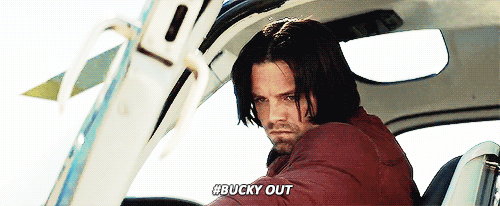
1959-1964 - I got sidetracked. Anyway. There is some chatter in the fandom that Bucky killed Kennedy. If we take the 50 years thing literally and go with the 1964 date, he probably didn't. If we take it almost literally and infer the 1959 date on his file was from his first field test or mission, he . . . really could have killed Kennedy. I do like to mix my movies, though, and imagine that Bucky was sent to Dallas, met up with Magneto trying to stop him, hai there metal arm, and got wrapped up like a burrito in a chain link fence before he could fire a shot.....
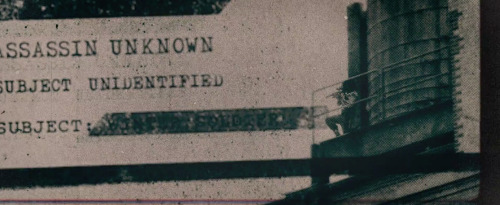
Anyway....despite how well-armed the Winter Soldier is . . . jesus I just re-read this and realized I made a horrible pun but I'm not changing it because it made me laugh, most political assassinations are not usually by gun or knife. You can't have plausible deniability if you shoot someone in the face. That's why the Winter Soldier's reputation is as both assassin AND spy.
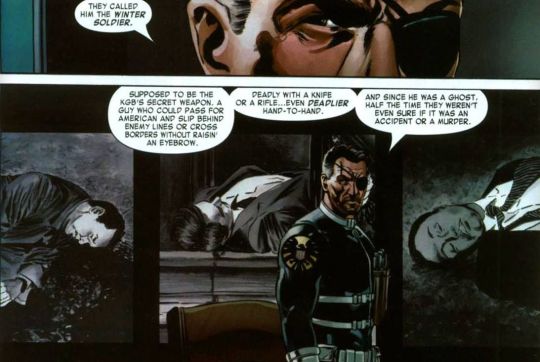
So I’m going to highlight some real-world events that you could ascribe to the Winter Soldier through the years, if you are so inclined to write these things in stories. Dates and locations are between the spades, for ease of tracking this sneaky bastard's possible real historical movements. Bold dates are confirmed by MCU canon.
♠ September 11, 1973 - Santiago, Chile ♠ The apparent suicide of Chile’s president, Salvador Allende - with an assault rifle – during the Pinochet coup. Being honest, this was probably the CIA, but still.
♠ early December 1977 - Cairo, Egypt ♠ David Holden - a writer, journalist, broadcaster, and possible CIA agent - was the Chief Foreign Correspondent of the Sunday Times, and is shot in still unexplained circumstances just before the peace talks between Egypt and Israel. With his connections, and possible CIA ties, there is no telling what this guy was up to, or who would have wanted him to stop doing it.
♠ April 17, 1978 - Kabul, Afghanistan ♠ Mir Akbar Khyber, an Afghan intellectual and a leader of the Parcham faction of the People's Democratic Party of Afghanistan (PDPA), was killed outside his home. I don't know how. His death led to the overthrow of the republic, and to the advent of a socialist regime in Afghanistan.
♠ December 23, 1978 - Phnom Penh, Cambodia ♠ Malcolm Caldwell, a British lecturer in southeast Asian studies and a Marxist writer who was a vocal supporter of Pol Pot and the Khmer Rouge, was killed for no apparent reason other than being a douche. This one's interesting because there was a witness: About 11:00 p.m. that night [Elizabeth] Becker was awakened by the sound of gunfire. She stepped out of her bedroom and saw a heavily armed Cambodian man who pointed a pistol at her. (Sounds familiar right??) She ran back into her room and heard people moving and more gunshots. An hour later a Cambodian came to her bedroom door and told her that Caldwell was dead. . . He had been shot in the chest and the body of a Cambodian man was also in the room, possibly the same man who had pointed the pistol at Becker. Three days later, Vietnam invaded Cambodia and ended Khmer Rouge.

In comics canon, the Winter Soldier goes rogue some time in the 70's - I think, I cannot find it - on a job in NYC after seeing his little sister Rebecca on the street. Hydra tracks him down and pets him on the head and takes him back because he doesn't know why he bolted. After it becomes obvious that he's having issues, he shadows the head of the program (Lukin, the dude from Civil War) for two years as his personal bodyguard, then is put back into cryo. It isn't until after this stretch that the mind wipes start, because his behavior is degrading more and more and he becomes harder to handle. There is a ten year stretch here in the late 70′s to mid 80′s, basically, that this could have gone down.

♠ August 17, 1988 - Bahawalpur, Pakistan ♠ President Muhammad Zia-ul-Haq of Pakistan dies in a plane crash, along with 31 others, including a shitload of important politicians I don't want to bother listing. Witnesses report the plane flying erratically, then nosediving and exploding on impact. An investigation concluded it was a 'criminal act of sabotage'. Zia-ul-Haq's most enduring legacy was his indirect involvement and military strategies against the USSR's war in Afghanistan.
♠ November 24, 1989 - Peshawar, Pakistan ♠ Abdullah Azzam, a Palestinian Islamist leader - who Wikipedia claims is also known as the Father of Global Jihad - was killed with his two adult sons by a car bomb. In a narrow street across from a gas station, a bomb that had a 50-metre detonation cord led to the sewerage system where the assailant presumably waited. He literally laid in the sewers waiting, that's hardcore. Anyway, Azzam both controlled the jihadi forces who had fought against the USSR in Afghanistan and opposed the extension of the Islamist war to targets in the non-Islamic world. His protégé was a man named Osama bin Laden.
♠ December 16, 1991 - Upstate New York like a goddamn hipster ♠ Yeah, Mission Report and stuff. Howard and Maria Stark are murrrrrderrrrred in a car. (I have actual real meta that circles around this but that’s for a different bout of insomnia I guess).
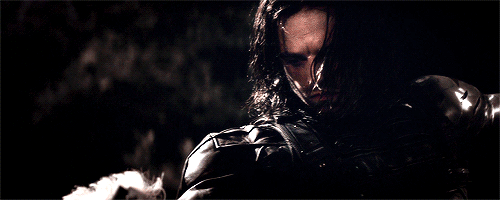
♠ December 25, 1991 - Siberia, probably, jesus is anyone still reading this? ♠ The USSR is dissolved. It's likely they moved all their Hydra assets into Pierce's control shortly after this, meaning the Soldier became 'the Asset' and moved to DC like a politician. The scenes from Civil War with the other Soldiers going all Mutiny on the Bounty had to have happened somewhere in December of 1991.

♠ 6 April 1994 - Kigali, Rwanda ♠ The plane carrying Rwanda’s and Burundi’s presidents, Juvenal Habyarimana and Cyprien Ntaryamira, is shot down as it prepares to land, precipitating the Rwandan Genocide and the First Congo War. That's one hell of a precision strike, if you want chaos.
♠ November 11, 2004 - Gaza Strip, probably? ♠ Yasser Arafat dies in a Paris, France hospital, for reasons that are still not clear but apparently began to develop on October 25, 2004. Many believe he was poisoned by polonium laced into his clothing and belongings, which is why this one is sort of hard to place for a Winter Soldier location. I'm assuming he would have at least accessed the home in Gaza City, Palestine?
♠ July 30, 2005 - a mountain range in southern Sudan near New Kush ♠ John Garang, leader of the Sudan People’s Liberation Army (SPLA) and Sudan’s new vice-president, dies in a helicopter crash after the January 2005 peace agreement, which leads to rioting in Khartoum.
♠ 2009 - Odessa, Ukraine ♠ The Winter Soldier visits Odessa so he can shoot Natasha Romanov in her bikini line, plus an engineer dude or something I'm too lazy to go looking for the story tbh, we've all seen the movie.
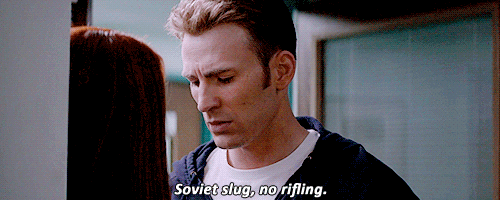
♠ May 4, 2012 - just outside nuke range of Manhattan, New York ♠ The Battle of New York. If I was Hydra, I'd have my greatest weapon poised and ready to go kick some alien ass if all else failed, kwim, but not so close as to be exploded. You can't rule the world if someone else has already conquered that shit.
♠ within a week of Monday, Memorial Day, May 26, 2014 - Washington, DC ♠ (brilliant date analysis from Katie_P on AO3!) Nick Fury is almost killed, twice. It's apparent that the Asset's home has moved from Siberia in the 90's to a bank vault in DC at some point in the last . . . IDK, 23 years. . We all saw the chase in the street, but the Soldier takes his shot through one of Steve's walls using thermal imaging on his scope, then plays ultimate frisbee with Captain America for a minute before saying fuck it and going back to the bank where they keep him.
Then some moron doesn't read his instruction manuals thoroughly and sends Captain America's dead best friend to kill him without anticipating the inevitable joint Cap/Asset system error.

Anyway. The Soldier saves Steve's dumb ass one more time, then bolts and heads back to the bank to utterly fuck that shit up, but he doesn't kill anyone there. He specifically says he has enough blood on his hands, and lets them all live. Then he ghosts and doesn't resurface until he smells plums two years later. As settled as he was in Romania, he probably spent at least half a year of those two years there.
That's all I got.

Okay Jesus, so that was a lot of work. Comics mentions that I didn't include? Steve and Bucky knew Wolverine during WW2. They fought together several times. And later, the Winter Soldier helps Wolverine escape from the Weapons X Facility, which Wolverine doesn't find out until much later. I don't know when that is and . . . God help me, I kind of don't care at this point? Also, one panel has Bucky claiming that he killed Hitler. If so, good.
#bucky barnes#the winter soldier#history nerd rants#research#fic reference#history sorta#timeline#meta maybe?#captain america#MCU detail references
2K notes
·
View notes
Photo

This is the best Thanksgiving stuffing I have ever had. With a mix of Southern-style cooking and Italian flavors it brings all great tastes together. I got this recipe from my mom last year after everyone gave it amazing reviews!
0 notes
Text
Hey y’all! Hope you all had a delicious Thanksgiving! I went down to Charleston, South Carolina for the holiday week. I absolutely devoured their fabulous food scene and managed to check out some of their top eateries and bars.
Holiday Week
Ready!
I stared off with a great Italian dinner and cocktails. My Historic District hotel was located right off upper King which is lined with an abundance of bars and restaurants.
Indaco
Meatballs
Fried Artichokes
Black Pepper Tagliatelle
Chef’s Counter
Yummm
Ricotta Fritters
The Belmont
I enjoyed a wonderful brunch, then took an informative tour of lovely Charleston before enjoying a couple rooftop brews.
Millers All Day
Brunchin
Breakfast Sandwich
Good Stuff
Couldn’t Resist
Tour Time
Rainbow Row
Rainbow Row
Charleston
Charleston
Charleston
Craft Beer
IPA
I had some solid Texas-style barbecue for lunch and soft pillowy gnocchi for dinner. Afterwards, it was amazing craft cocktails and entertainment for Thanksgiving Eve.
BBQ Fix
Charleston
Brisket
Lewis Barbecue
Dinner
Ricotta Gnocchi
Proof
Thanksgiving Evr
Thanksgiving Day started off with a tasty Southern lunch. Dinner was thoroughly enjoyed at High Cotton where I sat at The Notebook table and indulged in some yummy local oysters, She Crab Soup, a nice Turkey dinner, roasted Prime Rib, and Pecan Pie. So good!
Magnolia’s
Pimento Cheese
Fried Green Tomatoes
Dinner
Thanksgiving
Local Oysters
She Crab Soup
Turkey Dinner
Roasted Prime Rib
Pecan Pie
I was stuffed from the first couple days, but couldn’t stop there. I enjoyed more Southern dishes at a popular breakfast spot, checked out one of the oldest museums in the United States, then had an incredible seafood lunch at 167 Raw.
Charleston
Pork Belly Grit Bowl
Breakfast
Biscuit Sandwich
The Charleston Museum
The Charleston Museum
167 Raw
Alton Brown Approves
Yummm
Salmon Crudo
Scallop Po’Boy
Seafood Lunch
For my final night in Charleston, I booked a seat at McCrady’s tasting room where I enjoyed 13 courses, some caviar, lots of wine, and top notch service.
McCrady’s
Final Night
Tasting Menu Only
Caviar
Caviar
13 Courses
Cobia
Wine Pairing
Steak Tartare
Executive Chef
Dessert Pairing
Dessert
McCrady’s
McCrady’s
I did some King Street bar hopping and even got to meet up with my cousin I haven’t seen in several years! For my final few hours before heading to the airport, I had a great Cuban lunch then walked around and enjoyed the nice weather.
Cuban
Cuban and Green Fries
Charleston
Charleston
Charleston was beautiful and super delicious! Thank you! My next trip isn’t until mid January (so far away, I know) where I’ll be joining a medical mission once again since it was such an amazing experience. Until then, more catching up to do!
I’m Back From Charleston! Hey y'all! Hope you all had a delicious Thanksgiving! I went down to Charleston, South Carolina for the holiday week.
#167 Raw#Charleston#charleston restaurants#chs#Cuban Gypsy Pantry#Fig#foodie#foodie fun#High Cotton#Hominy Grill#Indaco#Lewis Barbecue#Magnolia&039;s#McCrady&039;s#Millers All Day#Revelry Brewing#solo travel#south carolina#southern cuisine#travel#US Travels
1 note
·
View note
Text
It’s Thanksgiving
Katherine has been up all morning cleaning and trying to make stuffing. She and Jack are hosting but neither of them can cook
Jack has been attempting to roast a turkey but has no idea what he’s doing.
Smalls timidly asked to stay over the night before, since she pretty much has nowhere to go while she’s in the city anymore, is trying to help him
Their tag team is sweet, but unsuccessful, and so Smalls gives up and gets to work on a pecan pie
Southern Smalls knows how to make a mean pecan pie and y’all can FIGHT me on it
Thankfully, Medda arrives early enough to keep Jack from ruining the turkey
But not without a big hug and kiss for both Kath and Jack, and a hug for Smalls as well because it’s been so long since she’s seen the girl
Next comes the Jacobs family, and Esther immediately sets to helping Medda and Katherine while Davey and Les help Jack rearrange the furniture
Sarah and Smalls follow them around to set the table
Crutchie arrives with a massive tin of cranberry sauce. It probably weighs more than him, but he could singlehandedly eat the whole thing. He passes it to the girls in the kitchen and takes a seat beside Mayer to heckle the other boys.
Spot and Race arrive together (duh). Race has made SO MANY SIDES RACE GOOD LORD
Green beans and casseroles and macaroni and cheese and vegetable medley and...
Medda may have saved the turkey but Race resurrects it. Esther dresses it. They all roll their eyes at Jack good-naturedly
Spot stands guard over a container of Italian wedding cookies so Les can’t get to them until after dinner
Blink and Mush show up with chips and dip to snack on before dinner
The game is turned on and several people *ahem*sarahspotjackalbert* get a little too hype and the dip does not survive
Romeo and Specs bring six pies
You would think this would be too many pies. But there will be no leftovers.
Albert brings two Costco-sized bags of bread rolls because idk how it is in everyone else’s family, but in mine the Mess™ brings the bread
Bill and Darcy shyly arrive with two heaping pans of cornbread. They’re fairly reserved until Bill catches sight of the fourth quarter of the game and suddenly he’s yelling and Katherine is laughing at everyone shocked looks
Everyone else trickles in eventually, bringing small sides and deserts.
Mayer says a prayer and Jack makes a speech
Jack cries as he does bc “I’m just so thankful for all of you”
They’re all so thankful for each other and the friends they have and this family they’ve built
They share what they’re thankful for around the table
*whispers* race and Les have a small food fight before Spot gives them a Look™*
Elmer and Crutchie wrestle for the last roll
A pickup football game in the yard is the event of the year
Medda and Esther sit on the sidelines out back to laugh and take pictures, but other than that everyone plays
Everyone. No one but the moms is allowed to duck out.
It’s a mess
But it’s family
And that means it’s perfect
Bonus:
All leftovers and plenty of intentionally made extras are taken down to the children’s home. The newsies don’t forget their roots.
#newsies#newsies headcannons#thanksgiving#ill shut up now#jack kelly#davey jacobs#racetrack higgins#katherine plummer#smalls#albert#specs#romeo#sarah jacobs#les jacobs#eather and meyer jacobs#family#medda larkin#i love them all#look at this whacky famil#pulitzer isnt fuckin invited
73 notes
·
View notes